Key takeaways:
- Industry trends are shaped by shifts in technology, like the rise of streaming services, influencing music styles and artist recognition.
- Music awards play a critical role in validating artists, fostering community, and highlighting diverse genres that may otherwise be overlooked.
- Data analytics and social media are essential tools for assessing trends, revealing audience engagement and preferences.
- Collaboration among artists and an emphasis on sustainability are emerging trends that reflect broader cultural shifts within the music industry.
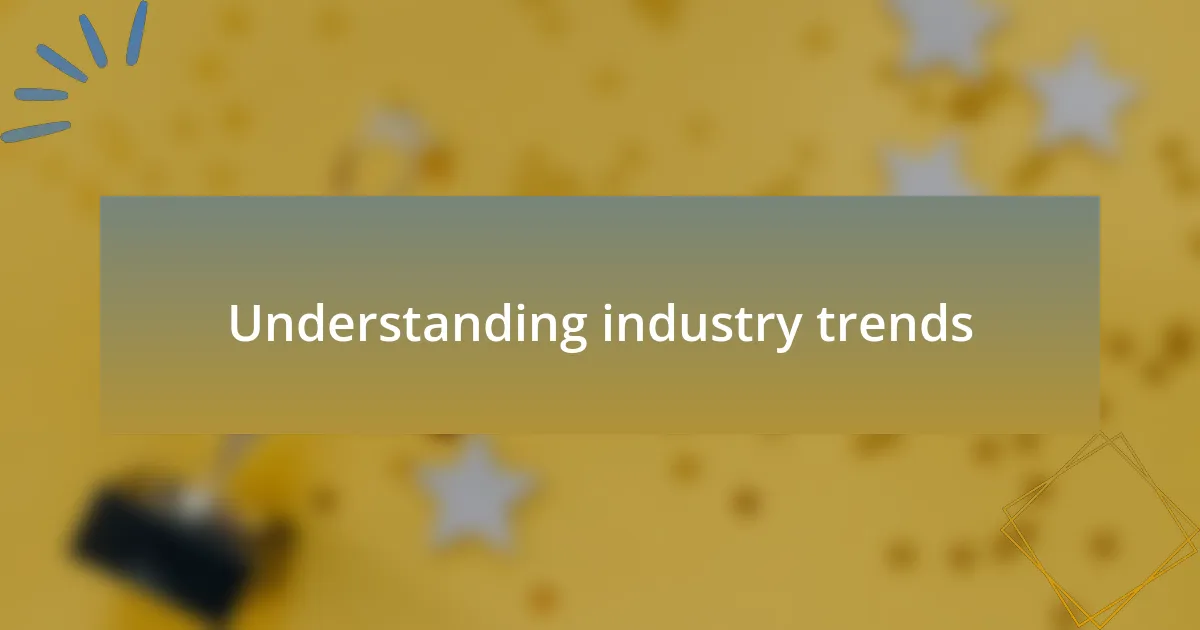
Understanding industry trends
Understanding industry trends requires a keen eye for patterns that often go unnoticed. I remember attending a local music awards show a few years back. The vibe in the room was electric, yet I noticed a shift; the categories were evolving, reflecting changes in the music landscape. How many artists were emerging from social media platforms compared to traditional record labels? This shift spoke volumes about where the industry was headed.
I often find that immersing myself in the music community allows me to sense these trends more acutely. Conversations with artists reveal their challenges and aspirations, which are instrumental in understanding the broader market. Have you ever considered how the rise of streaming services has influenced not just artists’ paths but also the types of awards being considered? This aspect is crucial as it shapes both the present and future of music accolades.
As I analyze the trends, the emotional resonance of music plays a significant role. For example, the recent surge in mental health themes within songs highlights societal shifts and indicates a deeper connection between artists and their audiences. Reflecting on these emotional insights helps paint a clearer picture of what the future may hold for music awards and the artists honored within them.
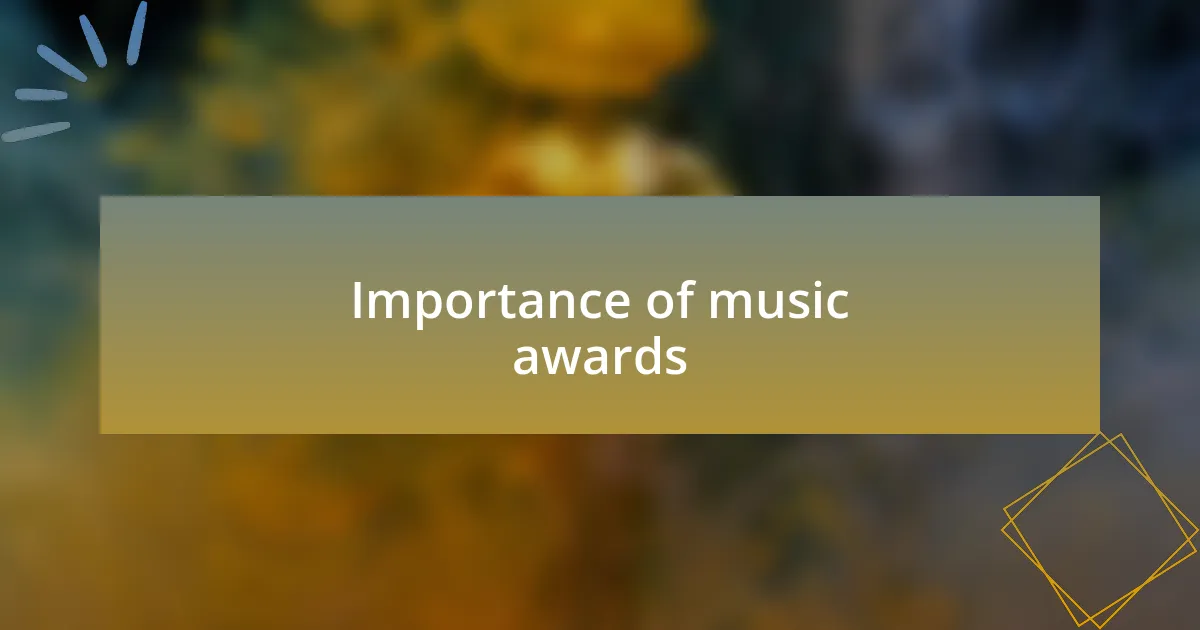
Importance of music awards
Music awards hold significant value in recognizing artists’ hard work and creativity. I recall a gripping moment at a major award show when an up-and-coming artist won an unexpected accolade. The raw emotion they displayed highlighted how these awards can validate an artist’s journey, often translating into broader recognition and opportunities. Don’t you think it’s remarkable how a single award can change the trajectory of a musician’s career?
These accolades also foster a sense of community within the music industry. I’ve often noticed that winners and nominees come together in a shared celebration of their craft, creating bonds that may lead to future collaborations. Isn’t it fascinating how a simple trophy can symbolize not just individual achievement but a collective spirit that drives innovation and creativity?
Moreover, music awards spotlight artistic diversity, emphasizing genres and talents that might otherwise remain overshadowed. Last year, I was thrilled to see awards recognizing genres like indie pop and world music, proving that the industry is gradually embracing a wider array of influences. Isn’t it exciting to contemplate how these choices encourage emerging artists to push boundaries and explore new sounds?
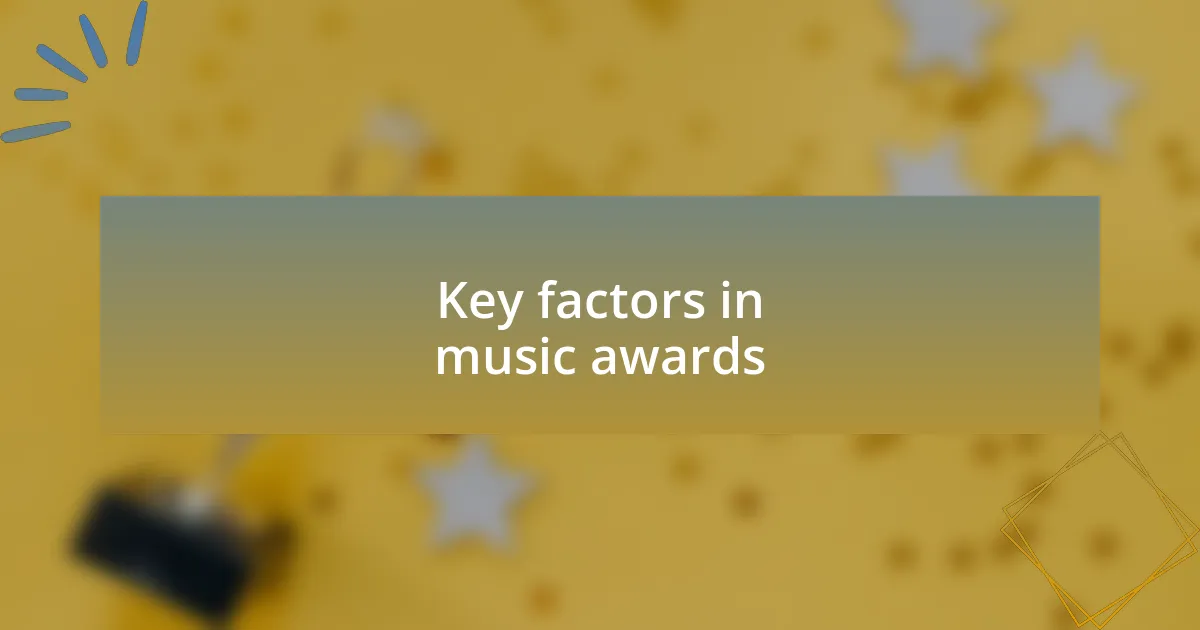
Key factors in music awards
When assessing key factors in music awards, one cannot overlook the role of public voting. I remember participating in an online poll for a popular awards event, feeling that my voice mattered. It’s interesting how this democratic element in voting can significantly influence which artists gain recognition, making fans feel more connected to the outcome. Don’t you ever wonder how much a fan’s vote can sway the entire event?
The credibility of the judging panel also plays a vital role in determining the legitimacy of the awards. Reflecting on my experiences, I find that when influential industry experts or respected musicians are part of the judging process, it boosts the awards’ prestige. It leads me to ask: how much trust do we place in our favorite artists’ decisions when they stand alongside notable figures as judges?
Another important factor is the alignment of the categories with current music trends. I often see categories evolve to include genres that resonate with today’s audiences, like electronic dance music or hip-hop. It feels like an exciting reflection of our changing musical tastes, doesn’t it? This adaptability not only keeps the awards relevant but also acknowledges the vibrant creativity bubbling within the industry.
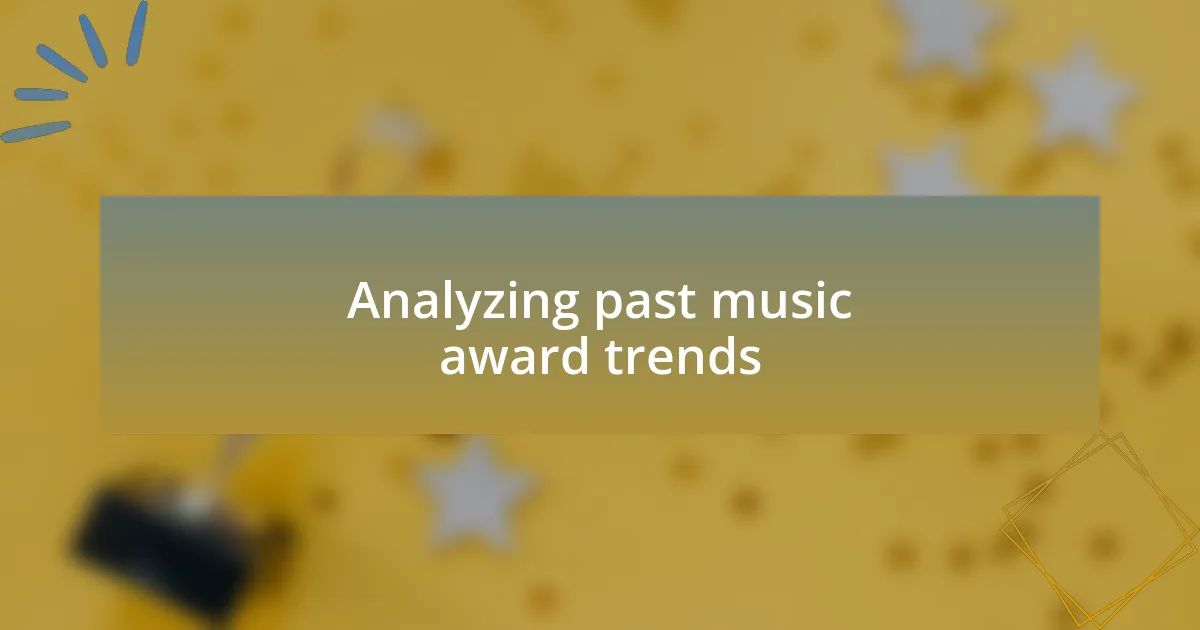
Analyzing past music award trends
When I dive into past music award trends, what often stands out is the evolution of genre representation. I remember watching the Grammys a few years back and being struck by how many nominees were from genres that barely existed a decade earlier, like trap or indie pop. It really makes me think: how does this shift reflect changing societal tastes and the music industry’s willingness to embrace diversity?
Another aspect that fascinates me is the influence of technological advancements on award shows. For instance, the rise of streaming platforms has transformed how we consume music. I vividly recall the buzz around artists like Billie Eilish, who gained recognition primarily through Spotify. Isn’t it incredible how technology reshapes the landscape, affecting not just who wins, but how we perceive what it means to be successful in music?
Additionally, looking at past winners reveals a compelling narrative about cultural moments and movements. For instance, when Adele swept the awards in 2012, it resonated deeply with a generation grappling with heartbreak and vulnerability. I often reflect on how such milestones create connections between artists and audiences. How do these moments capture the essence of what we’re collectively experiencing at any given time?
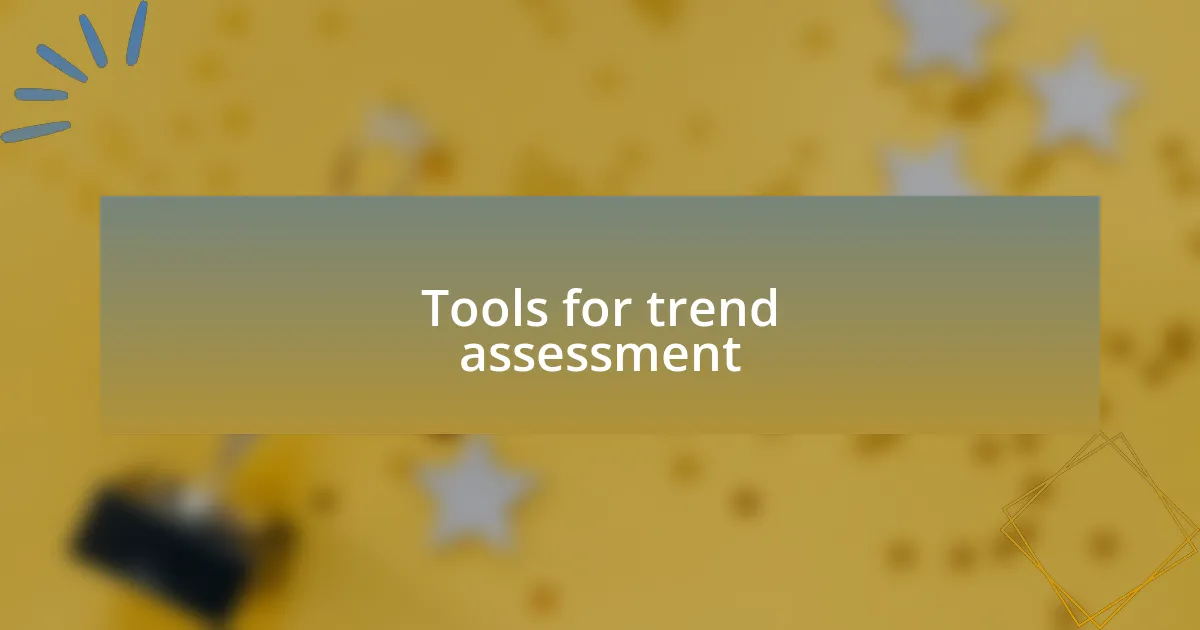
Tools for trend assessment
When it comes to assessing music award trends, data analytics tools are invaluable. I often rely on platforms like Spotify for Artists or SoundCloud Insights, which offer metrics such as stream counts and listener demographics. Seeing the numbers behind a song’s success not only informs me about current trends but can also point to emerging artists who might dominate next year’s awards.
Social media is another essential tool for gauging trends. I love scrolling through Twitter and Instagram to catch real-time reactions during award shows. The buzz around certain performances or unexpected wins can not only highlight what resonates with audiences but also shape conversations for weeks to come. Isn’t it fascinating how a single tweet can spark major discussions about an artist’s impact?
Finally, fan engagement metrics provide insights that are often overlooked. Streaming playlists curated by fans, for instance, can reveal the types of music people are rallying behind. I remember discovering a new artist through a fan-created playlist that suddenly gained traction. How often do we see these grassroots movements pushing artists into the spotlight at major award shows? This underscores the power of community in shaping trends within the music industry.
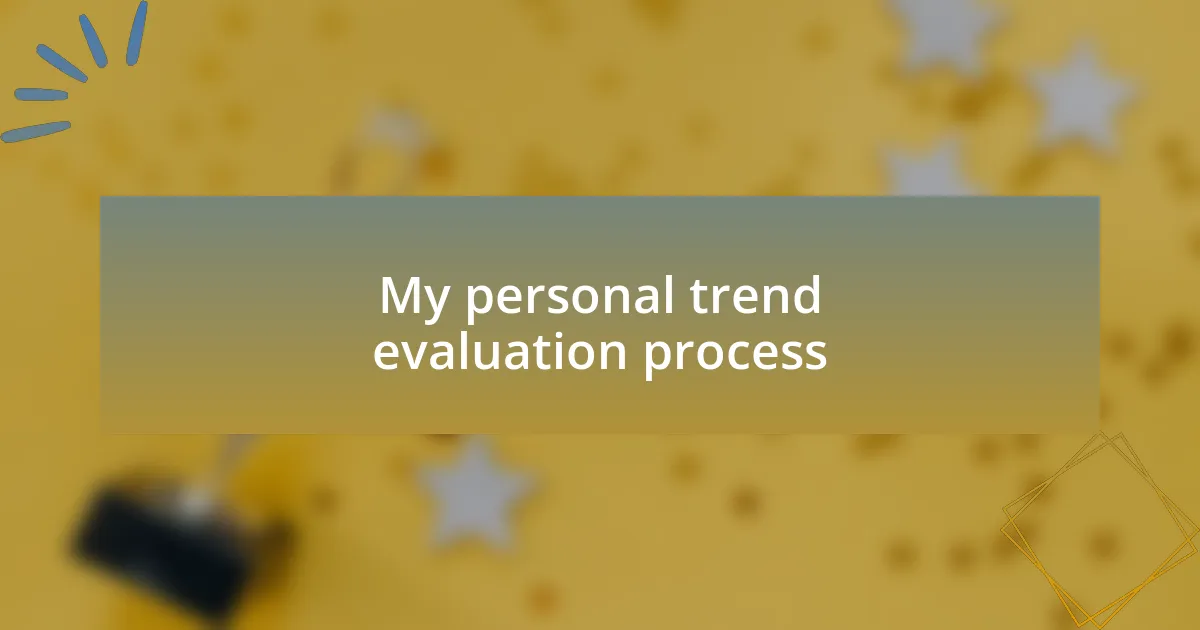
My personal trend evaluation process
When I evaluate music industry trends, I start by immersing myself in the music itself. Listening deeply to various genres, I often find that my emotional reactions can guide me towards subtle shifts happening within the industry. For instance, I remember hearing a song that felt completely different from mainstream hits—something about its raw vulnerability struck a chord with me. Isn’t it amazing how a piece of music can evoke such powerful feelings and indicate a larger trend of authenticity emerging in the industry?
In addition to my personal listening habits, I pay close attention to the narratives surrounding artists. When I read interviews or follow artists’ journeys, I often spot common themes that resonate with listeners. Recently, I came across an artist who discussed their struggles with mental health. This resonated with many fans and sparked a larger conversation. Have you noticed how these personal stories can reshape how we perceive music and the artists behind it? It’s a reminder that behind every song, there’s a human experience that can reflect broader societal trends.
Lastly, attending local music events and award shows has significantly influenced my trend evaluation process. The energy in the crowd is palpable, and I often chat with fellow music lovers to gauge their opinions. I recall one evening at a small venue where an under-the-radar band had people on their feet, completely engrossed in the performance. The excitement I witnessed that night made me realize that vibrant local scenes are often the breeding ground for the next big trends. What I’ve learned is that sometimes, looking at smaller, grassroots movements provides a richer insight than the glitz of major awards.
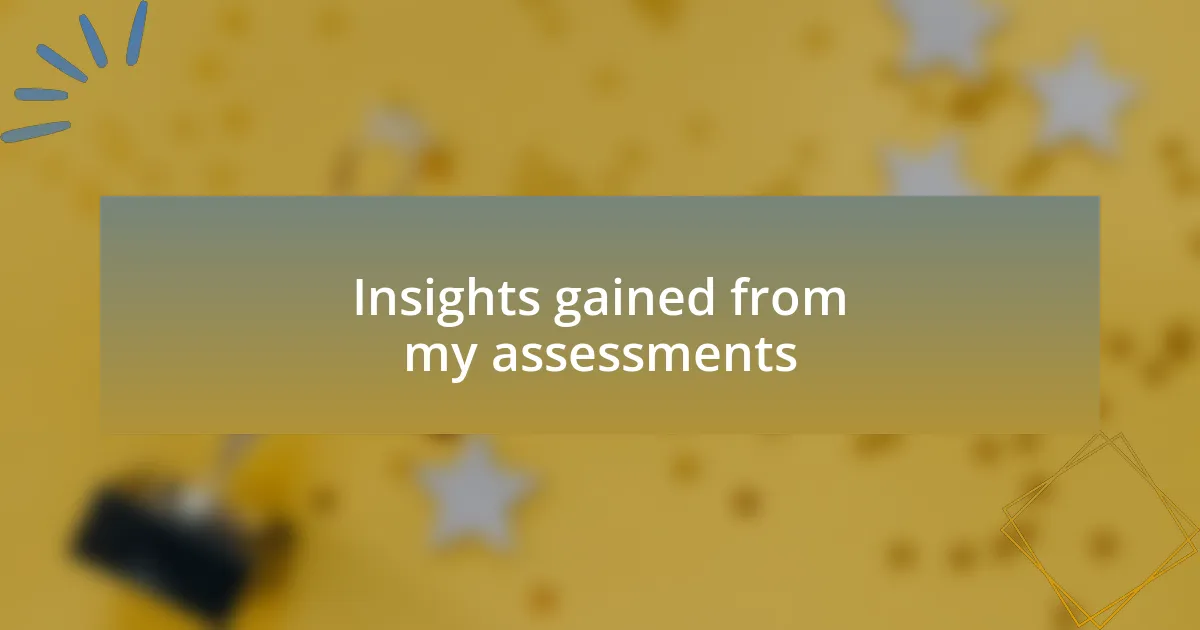
Insights gained from my assessments
When I reflect on my assessments of the music landscape, one standout insight is the undeniable power of collaboration among artists. I vividly recall a project where two completely different musicians came together to create an unexpected sound. Watching their synergy unfold not only unveiled fresh musical landscapes but also emphasized how collaboration can influence trends. Have you ever thought about how these partnerships challenge our expectations and expand the creative palette?
Another takeaway from my evaluations is the shifting nature of music consumption. I remember sitting in a cozy café, headphones on, as I streamed a new release. That moment made me realize how streaming platforms have reshaped not just how we listen, but also how artists reach their audiences. It’s fascinating to think about how accessibility affects everything—from song structure to marketing strategies. How do you think these changes impact the future of music?
Lastly, I’ve identified an emerging trend toward sustainability in the music industry. During a recent festival, I noticed several artists advocating for eco-friendly practices, from using recyclable materials for merch to promoting carbon-neutral events. This movement resonated deeply with me because it highlights the artist’s responsibility towards future generations. How can we support this shift and use our voices to encourage more sustainable practices in music?